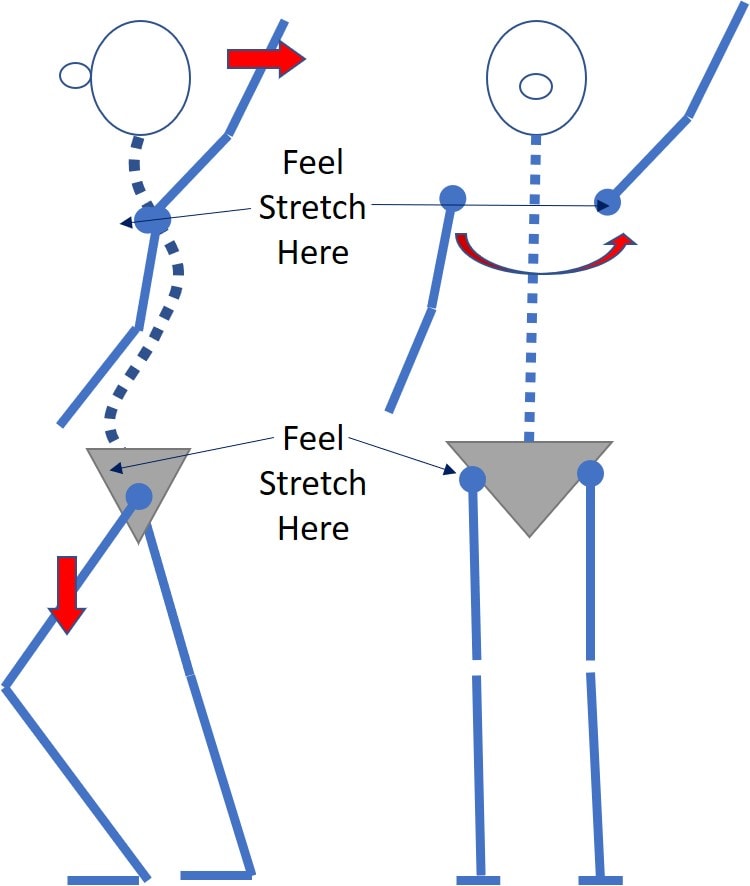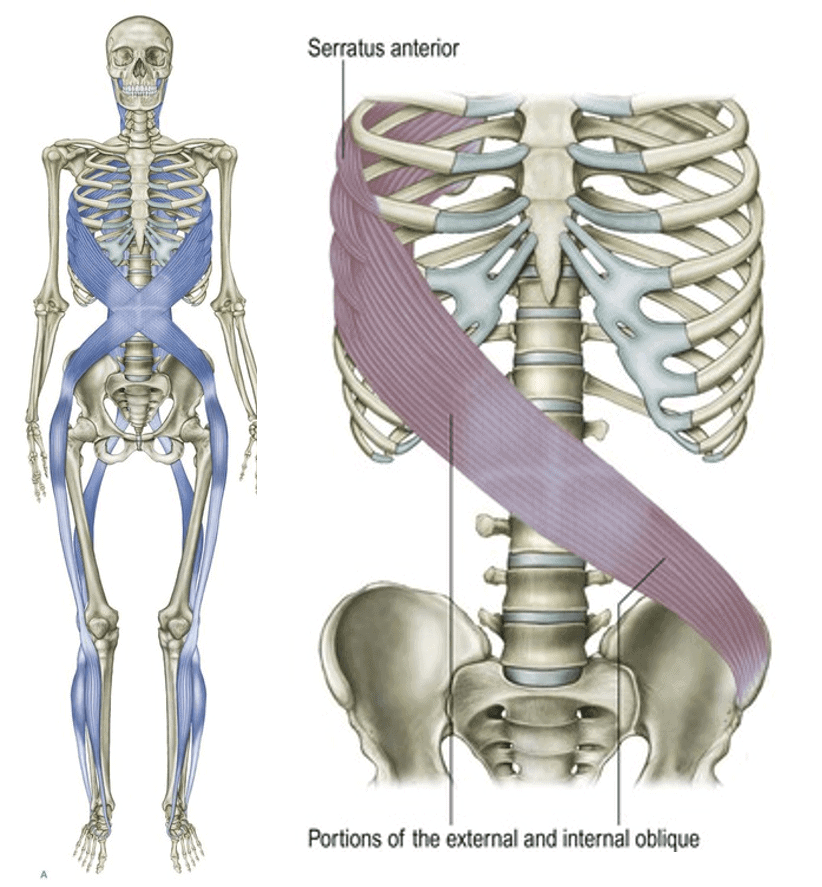Shoulder Strecthing on a Diagonal Saves My Rotator Cuff!
Most people hate getting old. I can’t say I’m a big fan, but for someone whose job it is to fix the aging musculoskeletal systems of other people, age is an incredible teacher. My left shoulder is a great example that will help us learn today about the diagonal organization of the body. Let’s dive in.
Age, Gravity, and Forward Shoulders
Gravity is a tough mistress as we age. If you’re not doing something every day to fight it, your musculoskeletal system is aging faster than it should. A good place to understand that is through our neck and shoulder complex.
Your shoulders round forward as your neck and upper back fall forward. This head forward position causes your shoulders to hang on the tendons rather than firmly seated in the shoulder joint. This can lead to extra wear and tear on the tendons and an eventual rotator cuff tear.
Fascial Connections
Doctors and patients alike are taught that their muscles are individual things. However, they are really not. They’re all connected through a fascial network that connects distant parts of the body. If you want an awesome read on this subject, Anatomy Trains is your ticket.
The Ground the Shoulder is Built Upon
The rib cage is the ground the shoulder is built upon. If one side of the rib cage moves forward slightly, the shoulder must move with it. That forward shoulder can do damage to the tendons as described.
My left shoulder has been tight in the front for years. That’s because my rib cage is slightly turned. Do you know how I can tell without an MRI? In order to get my abdominal muscles to contract evenly, I need to turn my thoracic spine slightly to so it’s even.
The Front Diagonal Of the Body
Your shoulder is connected to a front diagonal fascial connection. As seen above, the connection goes from the serratus anterior muscle on your rib cage to the same side external oblique abdominal muscle to the opposite side internal oblique muscle which anchors in the opposite pelvis. So that means my left shoulder is connected to the abdomen and my right pelvis and hip.
The Front Diagonal Stretch that Saved My Left Shoulder

This is a stretch for the left shoulder, obviously, you would reverse it all for the right. Stand with your both feet comfortably side to side and then take your left hand and move it back and up and behind your body, turning your ribs in that same direction. At the same time, bend that same leg and put the right leg behind you. Now sink your pelvis down as you turn your rib cage and reach behind you with the left hand. You should feel a stretch in the front of the left shoulder and right hip.
My Results?
As long as I do this a few times a day for a minute or two, my left shoulder feels more stable and doesn’t hurt. Why? This position allows my shoulder to sit better in its shallow ball and socket joint and avoids overloading my rotator cuff tendons. Before I began this stretch, there are times that lifting more than a 5-pound object over my head would cause my shoulder to hurt for hours.
The upshot? Figuring out what’s going on in your body is critical. In my case, my left forward shoulder was wreaking havoc on my rotator cuff tendons. Realizing that my body is connected in a diagonal was key to finding a quick fix!

If you have questions or comments about this blog post, please email us at [email protected]
NOTE: This blog post provides general information to help the reader better understand regenerative medicine, musculoskeletal health, and related subjects. All content provided in this blog, website, or any linked materials, including text, graphics, images, patient profiles, outcomes, and information, are not intended and should not be considered or used as a substitute for medical advice, diagnosis, or treatment. Please always consult with a professional and certified healthcare provider to discuss if a treatment is right for you.
